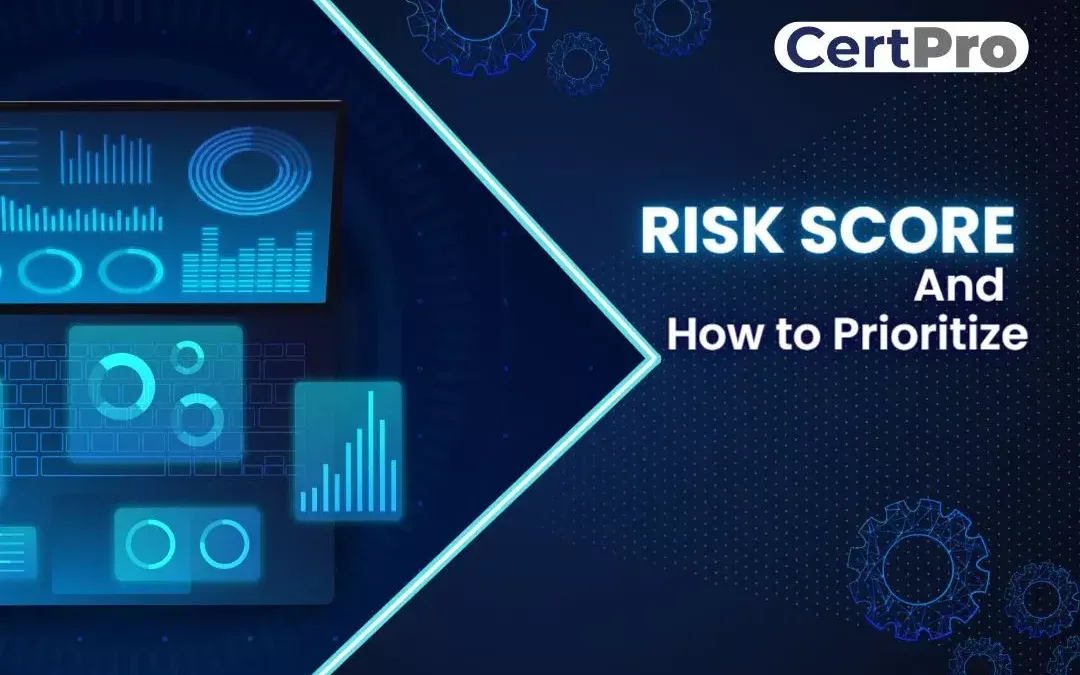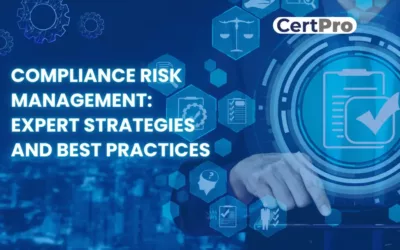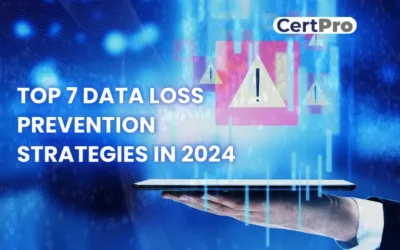Risk management is a critical process that allows businesses to proactively identify, analyze, and mitigate possible risks to their objectives and operations. Risk scoring and prioritization are critical components of risk management. This blog tries to offer a thorough grasp of risk scoring and its role in properly prioritizing risks. Organizations may allocate resources more efficiently and focus on the most significant risks by giving them risk scores based on their potential impact and likelihood.
By evaluating hazards in terms of their potential effects and likelihood, one can calculate a risk score that represents the overall risk level. This scoring technique ranks and compares hazards, allowing firms to properly prioritize their risk management initiatives. Decision-makers receive useful insights into which hazards pose the biggest threats and where resources should be focused by awarding ratings. The procedures involved in risk scoring and prioritizing will be outlined in this blog, highlighting the need for an organized approach to risk management.
WHAT IS RISK SCORING?
Risk scoring is a method used to assign a numerical value or rating to risks based on their potential impact and likelihood. The purpose of risk scoring is to quantitatively assess the overall level of risk associated with each identified risk.
While assigning a risk score, these two key primary factors are mentioned. They are:
Impact: The possible effects or severity of the risk if it materializes is referred to as its impact. Financial loss, operational difficulties, brand harm, legal and regulatory repercussions, and other undesirable events are all possible. Impact can be measured using a scale (low, medium, or high) or a numerical rating system.
Likelihood: The likelihood is the chance or potential of the risk event occurring. It takes into account a variety of elements, including historical data, trends, expert opinions, and the organization’s particular situation. Qualitative descriptions or numerical evaluations can also be used to estimate the likelihood.
The risk score is calculated after assessing the effect and likelihood of each danger. Typically, this is accomplished by multiplying the effect rating by the probability rating. The resultant score gives a quantifiable assessment of total risk, assisting companies in comparing and prioritizing hazards. The precise grading scale utilized might vary based on the preferences and setting of the business. It can be a basic numerical scale like 1 to 5 or 1 to 10, or it can be a more comprehensive scoring system that takes other aspects and criteria into account.
Risk Management: Scoring and Prioritization Approach
The systematic process of detecting, analyzing, and managing risks that may damage an organization’s objectives or operations is referred to as risk management. Understanding and analyzing possible risks, establishing ways to mitigate them, and measuring their efficacy are all part of the process. We will walk you through the phases of risk scoring and prioritization, emphasizing the significance of an organized approach to risk management.
1. Risk Identification: Identifying possible hazards is the first step in successful risk management. Risk assessments, historical data analysis, expert views, and stakeholder dialogues are all ways to do this.
A wide spectrum of hazards, including strategic, operational, financial, regulatory, and reputational threats, must be captured. Organizations may guarantee that all major risks are included during future stages of risk management by undertaking a thorough risk identification process.
2. Risk Assessment: Once hazards have been identified, they must be evaluated based on their possible impact and likelihood. Impact denotes the severity of the effects if the risk materializes, whereas likelihood denotes the possibility of its occurrence.
Impact and probability can be evaluated using either qualitative or quantitative approaches. To describe the effect and likelihood, qualitative approaches use subjective evaluations such as high, medium, or low. To give a more exact evaluation, quantitative approaches employ numerical scales such as 1 to 5 or 1 to 10.
3. Risk Scoring: Calculating a numerical score for each identified risk entails multiplying its effect rating by its likelihood rating. The risk score that results offers a quantitative estimate of the total risk level. On a scale of 1 to 5, a risk with an effect rating of 4 and a likelihood rating of 3 would have a risk score of 12. This scoring approach ranks risks based on their scores, allowing firms to properly prioritize their risk management activities.
Some businesses, on the other hand, utilize a risk matrix to integrate impact and likelihood evaluations into established risk categories. This matrix depicts a graphic depiction of dangers that are classified as low, medium, or high risk. Each zone correlates to a different risk response method, serving as a guide for risk prioritization.
4. Prioritization of Risks: Once risks have been rated, they must be prioritized based on their ratings or assigned risk categories. Several aspects should be considered throughout the prioritizing process, including the organization’s risk appetite, strategic objectives, available resources, and regulatory needs. Risks with higher scores or falling into higher risk categories should receive greater attention and resources in general. Prioritizing risks ensures that resources are directed toward the most serious threats and vulnerabilities.
Furthermore, businesses should analyze the interdependence of risks and their possible influence on numerous goals or initiatives. Risks that have the potential to cause a chain reaction or have far-reaching implications should be prioritized.
5. Risk Response: Organizations must build adequate risk response methods after prioritizing hazards. These techniques strive to successfully minimize or manage the identified risks. Risk minimization, risk transfer, risk acceptance, and risk avoidance are all risk response techniques. Here is some information on these points as well.
a) Implementing activities and procedures to lessen the possibility or effect of a risk is what risk mitigation entails. This might involve putting in place security measures, performing frequent audits, or developing backup systems.
b) Risk transfer is the process of transferring risk to a third party using methods such as insurance, contracts, or outsourcing. This method can assist businesses in reducing the financial impact of risks.
c) Risk acceptance is the deliberate choice to recognize the danger but not make any particular efforts to aggressively address it. This method is often employed when the expense of mitigation exceeds the possible repercussions of a risk.
d) Risk avoidance seeks to remove the risk entirely by avoiding participating in risk-related activities or initiatives. This method is often employed when there are dangers with significant potential effects or when viable alternatives are available.
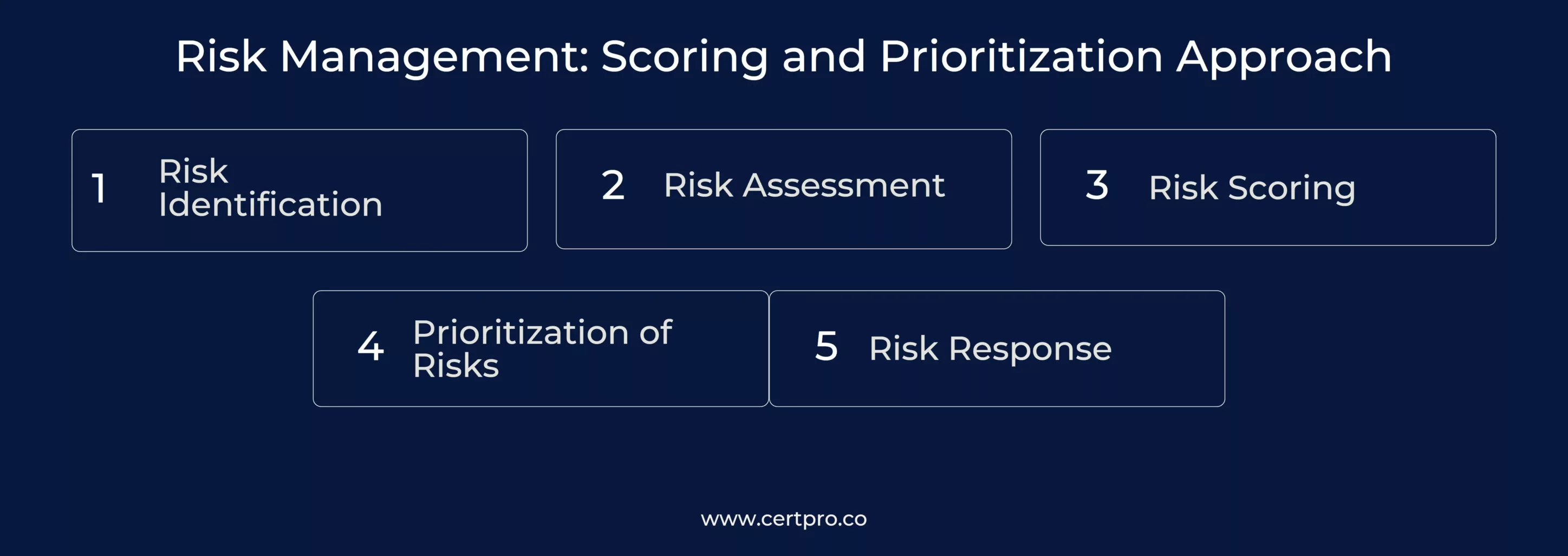
THE ADVANTAGES OF RISK SCORING AND PRIORITIZATION
Risk scoring and prioritization are essential tools in risk management that provide several advantages. Five key advantages:
1. Efficient resource allocation: Risk scoring and prioritization assist businesses in successfully allocating their limited resources. Organizations may focus their attention and resources on the most urgent and high-impact risks by analyzing them and awarding ratings. This guarantees that resources are spent efficiently and that the business can prioritize the most serious concerns.
2. Decision making: Risk scoring and prioritization enable a more systematic and data-driven approach to decision-making. Decision-makers have a clear awareness of the risk environment and may make educated decisions by assigning ratings to risks based on their probability and possible effect. This helps to eliminate subjective biases and guarantees that decisions are made on the basis of objective risk evaluations.
3. Proactive risk management: Organizations can take a proactive approach to risk management by evaluating and prioritizing issues. They can anticipate future dangers and take precautionary actions to lessen or eliminate them. This proactive approach lessens the chance of hazards materializing and the impact they may have on the organization.
4. Alignment with business objectives: Risk scoring and prioritization enable firms to link risk management activities with strategic goals. They may focus on preserving essential assets, guaranteeing business continuity, and accomplishing their goals by prioritizing risks that are most relevant to the organization’s goals. This alignment guarantees that risk management activities are focused and directly contribute to the organization’s performance.
5. Communication and transparency: Risk scoring and prioritization allow for more effective risk communication within a company. When risks are assigned scores and priority, communicating their relevance to stakeholders at various levels becomes simpler. This shared knowledge fosters openness and allows for more in-depth talks regarding risk mitigation techniques, resource allocation, and overall risk appetite.
Finally, risk scoring and prioritization provide enormous benefits to firms in efficiently managing risks. Organizations may efficiently allocate resources by employing these methods, concentrating on the most essential risks. This data-driven strategy improves decision-making by giving a comprehensive picture of the risk environment and allowing for educated decisions.
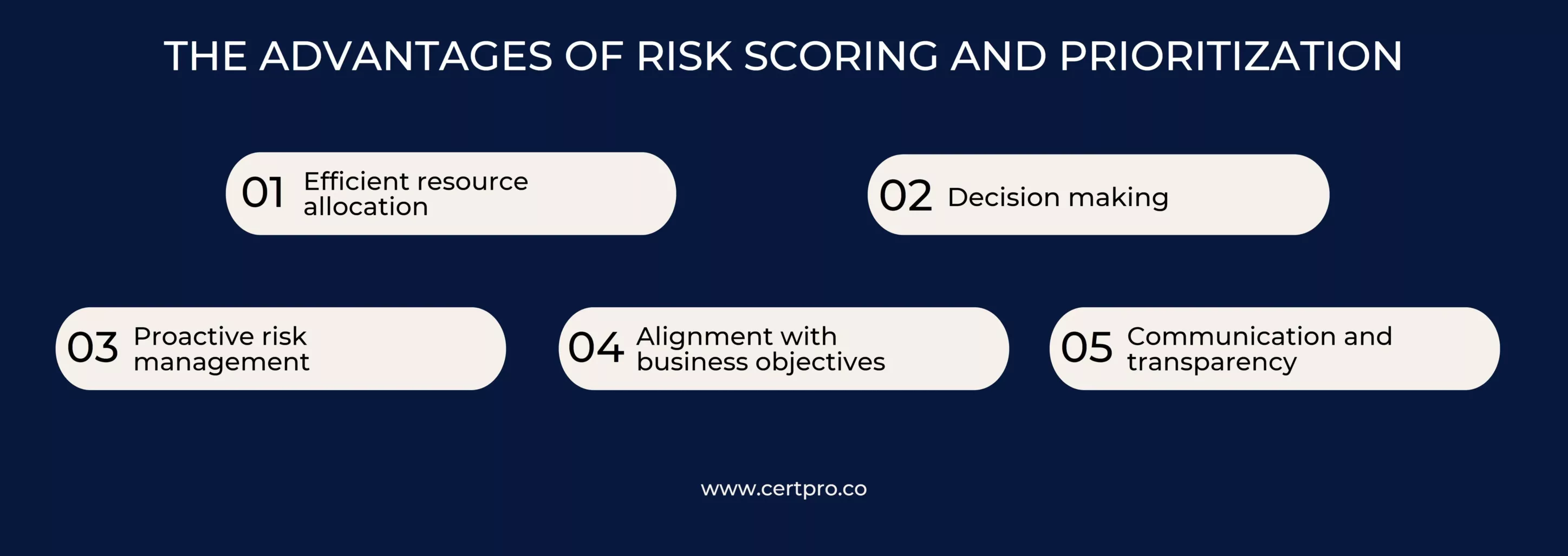
Effective Risk Scoring: The Key to Proactive Risk Management
Risk scoring and prioritization enable proactive risk management, aligning resources with strategic objectives and identifying hazards early on. This fosters communication, improves decision-making, and enhances organizational resilience. By continuously monitoring and reassessing risks, organizations can stay ahead of potential threats, safeguard their reputation, and achieve their objectives with confidence. Implementing a robust risk scoring system allows for effective risk assessment, resource allocation, and mitigation strategies, driving improved operational performance.
FAQ
How do you estimate a risk score?
Your analysis yielded the risk score, which is determined by multiplying the risk impact rating by the risk probability. It is this quantitative statistic that enables critical individuals to make risk-related choices swiftly and confidently.
What are the two most significant elements to consider when determining risk priority?
The risk matrix depicts two elements that, when combined, form zones, which are then assigned importance and priority. The most frequent method of prioritizing involves the use of two factors: impact and likelihood.
What is the priority of the risk score?
The priority of the risk score is to determine the order in which risks should be addressed and mitigated based on their severity and potential impact.
What exactly is a Key risk score?
A key risk indicator (KRI) is a statistic that assesses the chance that the combined probability of an occurrence and its consequences will surpass the organization’s risk appetite and have a significant negative impact on the organization’s capacity to succeed.
What is the connection between risk assessment and risk prioritization?
Risk scoring and risk prioritization are inextricably linked. Risk scoring is the process of giving numerical values to risks based on their effect and likelihood, whereas risk prioritization is the process of evaluating and comparing risks in order to establish their relative relevance. The cornerstone of risk prioritization is risk scoring, which allows businesses to devote resources and attention to the most significant issues.

About the Author
NICOLENE KRUGER
Nicolene Kruger, Regional Manager in South Africa, is an experienced Legal Counsel with expertise in compliance and auditing. Her strategic, solution-driven approach aligns legal standards with business objectives, ensuring seamless adherence to regulations.
COMPLIANCE RISK MANAGEMENT: EXPERT STRATEGIES AND BEST PRACTICES
Compliance risk considers the organization's potential legal, material, and financial losses due to compliance failure. Thus, compliance risk is known as integrity risk. Organizations of all sizes are exposed to compliance risk. Hence, compliance failure results in...
TOP 7 DATA LOSS PREVENTION STRATEGIES IN 2024
In the contemporary business landscape, data is the cornerstone of organizational vitality. Businesses leverage data extensively to inform decisions, maintain competitiveness, and foster expansion. Nonetheless, they encounter multifaceted challenges emanating from...
TIPS FOR ARTICULATING YOUR SECURITY POSTURE TO STAKEHOLDERS
Cybersecurity is now a top-tier priority for any Organization. Data breaches can ruin the entire company, destroy customer trust, and damage reputation. However, companies can find decision-making difficulties because stakeholders, board members, department heads, and...

